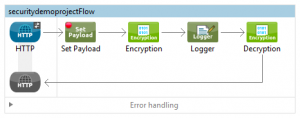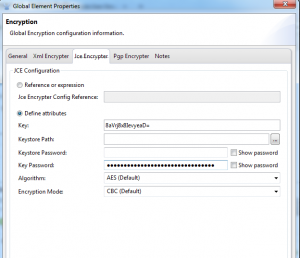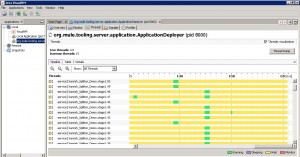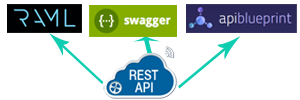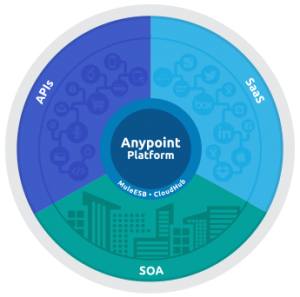1. Introduction
JBoss Messaging is a high performance JMS provider in the JBoss Enterprise Middleware Stack (JEMS). JBoss Messaging is the default JMS provider in JBoss AS 5.x and later.
2. Features
- A fully compatible and Sun certified JMS 1.1 implementation.
- A strong focus on performance, reliability and scalability with high output and low latency.
- Publish-subscribe and point-to-point messaging models.
- Topics that feed multiple message queues
- Persistent and non-persistent messages
- Guaranteed message delivery that ensures that messages arrive once and only once
- Transactional and reliable – supporting ACID semantics
- Customizable security framework based on JAAS
3. JBoss-JMS Configuration
3.1.Configuration-Queue
- Create queue-destination-service.xml file in \deploy\messaging folder for jboss 5.x
- Here is sample xml file
- <?xml version="1.0" encoding="UTF-8"?>
- <server>
- <mbean code="org.jboss.jms.server.destination.QueueService" name="jboss.messaging.destination:service=Queue,name=testQueue" xmbean-dd="xmdesc/Queue-xmbean.xml">
- <depends optional-attribute-name="ServerPeer">jboss.messaging:service=ServerPeer</depends>
- <depends>jboss.messaging:service=PostOffice</depends>
- <attribute name="SecurityConfig">
- <security>
- <role name="guest" read="true" write="true"/>
- <role name="publisher" read="true" write="true" create="false"/>
- <role name="noacc" read="false" write="false" create="false"/>
- </security>
- </attribute>
- </mbean>
- </server>
3.2.Configuration-Topic
- Create topic-destination-service.xml file in \deploy\messaging folder for jboss 5.x
- Here is sample xml file
- <?xml version="1.0" encoding="UTF-8"?>
- <server>
- <mbean code="org.jboss.jms.server.destination. TopicService" name="jboss.messaging.destination:service=Topic,name= testTopic" xmbean-dd="xmdesc/Queue-xmbean.xml">
- <depends optional-attribute-name="ServerPeer">jboss.messaging:service=ServerPeer</depends>
- <depends>jboss.messaging:service=PostOffice</depends>
- <attribute name="SecurityConfig">
- <security>
- <role name="guest" read="true" write="true"/>
- <role name="publisher" read="true" write="true" create="false"/>
- <role name="noacc" read="false" write="false" create="false"/>
- </security>
- </attribute>
- </mbean>
- </server>
4. JBoss-Oracle configuration for JMS
Create these tables in Oracle database
- CREATE TABLE JBM_DUAL (DUMMY INTEGER, PRIMARY KEY (DUMMY))
- CREATE TABLE JBM_MSG_REF (MESSAGE_ID INTEGER, CHANNEL_ID INTEGER, TRANSACTION_ID INTEGER, STATE CHAR(1), ORD INTEGER, PAGE_ORD INTEGER, DELIVERY_COUNT INTEGER, SCHED_DELIVERY INTEGER, PRIMARY KEY(MESSAGE_ID, CHANNEL_ID))
- CREATE INDEX JBM_MSG_REF_TX ON JBM_MSG_REF (TRANSACTION_ID, STATE)
- CREATE TABLE JBM_MSG (MESSAGE_ID INTEGER, RELIABLE CHAR(1), EXPIRATION INTEGER, TIMESTAMP INTEGER, PRIORITY INTEGER, TYPE INTEGER, HEADERS BLOB, PAYLOAD BLOB, PRIMARY KEY (MESSAGE_ID))
- CREATE TABLE JBM_TX (NODE_ID INTEGER, TRANSACTION_ID INTEGER, BRANCH_QUAL RAW(254), FORMAT_ID INTEGER, GLOBAL_TXID RAW(254), PRIMARY KEY (TRANSACTION_ID))
- CREATE TABLE JBM_COUNTER (NAME VARCHAR2(255), NEXT_ID INTEGER, PRIMARY KEY(NAME))
- CREATE TABLE JBM_ID_CACHE (NODE_ID INTEGER, CNTR INTEGER, JBM_ID VARCHAR2(255), PRIMARY KEY(NODE_ID, CNTR))
- CREATE TABLE JBM_POSTOFFICE (POSTOFFICE_NAME VARCHAR2(255), NODE_ID INTEGER, QUEUE_NAME VARCHAR2(255), COND VARCHAR2(1023), SELECTOR VARCHAR2(1023), CHANNEL_ID INTEGER, CLUSTERED CHAR(1), ALL_NODES CHAR(1), PRIMARY KEY(POSTOFFICE_NAME, NODE_ID, QUEUE_NAME))
- CREATE TABLE JBM_USER (USER_ID VARCHAR2(32) NOT NULL, PASSWD VARCHAR2(32) NOT NULL, CLIENTID VARCHAR2(128), PRIMARY KEY(USER_ID))
- CREATE TABLE JBM_ROLE (ROLE_ID VARCHAR2(32) NOT NULL, USER_ID VARCHAR2(32) NOT NULL, PRIMARY KEY(USER_ID, ROLE_ID))
In order to enable support for one of these databases, just replace the default hsqldb-persistence-service.xml configuration file with the Oracle database-specific configuration file in \deploy\messaging folder.
Here is oracle specific persistence file.
oracle-persistence-service.xml
- <?xml version="1.0" encoding="UTF-8"?>
- <!--
- Oracle persistence deployment descriptor.
- Tested with Oracle 10.2.0.1
- $Id$
- -->
- <server>
- <!-- Persistence Manager MBean configuration======================================== -->
- <mbean code="org.jboss.messaging.core.jmx.JDBCPersistenceManagerService" name="jboss.messaging:service=PersistenceManager" xmbean-dd="xmdesc/JDBCPersistenceManager-xmbean.xml">
- <depends>jboss.jca:service=DataSourceBinding,name=DefaultDS</depends>
- <depends optional-attribute-name="TransactionManager">jboss:service=TransactionManager</depends>
- <!-- The datasource to use for the persistence manager -->
- <attribute name="DataSource">java:/DefaultDS</attribute>
- <!-- If true will attempt to create tables and indexes on every start-up -->
- <attribute name="CreateTablesOnStartup">true</attribute>
- <!-- If true then we will automatically detect and reject duplicate messages sent during failover -->
- <attribute name="DetectDuplicates">true</attribute>
- <!-- The size of the id cache to use when detecting duplicate messages -->
- <attribute name="IDCacheSize">500</attribute>
- <!-- Some databases don't support inserting blobs using INSERT INTO ... SELECT FROM -->
- <attribute name="SupportsBlobOnSelect">false</attribute>
- <attribute name="SqlProperties"><![CDATA[
- CREATE_DUAL=CREATE TABLE JBM_DUAL (DUMMY INTEGER, PRIMARY KEY (DUMMY))
- CREATE_MESSAGE_REFERENCE=CREATE TABLE JBM_MSG_REF (MESSAGE_ID INTEGER, CHANNEL_ID INTEGER, TRANSACTION_ID INTEGER, STATE CHAR(1), ORD INTEGER, PAGE_ORD INTEGER, DELIVERY_COUNT INTEGER, SCHED_DELIVERY INTEGER, PRIMARY KEY(MESSAGE_ID, CHANNEL_ID))
- CREATE_IDX_MESSAGE_REF_TX=CREATE INDEX JBM_MSG_REF_TX ON JBM_MSG_REF (TRANSACTION_ID, STATE)
- CREATE_MESSAGE=CREATE TABLE JBM_MSG (MESSAGE_ID INTEGER, RELIABLE CHAR(1), EXPIRATION INTEGER, TIMESTAMP INTEGER, PRIORITY INTEGER, TYPE INTEGER, HEADERS BLOB, PAYLOAD BLOB, PRIMARY KEY (MESSAGE_ID))
- CREATE_TRANSACTION=CREATE TABLE JBM_TX (NODE_ID INTEGER, TRANSACTION_ID INTEGER, BRANCH_QUAL RAW(254), FORMAT_ID INTEGER, GLOBAL_TXID RAW(254), PRIMARY KEY (TRANSACTION_ID))
- CREATE_COUNTER=CREATE TABLE JBM_COUNTER (NAME VARCHAR2(255), NEXT_ID INTEGER, PRIMARY KEY(NAME))
- CREATE_ID_CACHE=CREATE TABLE JBM_ID_CACHE (NODE_ID INTEGER, CNTR INTEGER, JBM_ID VARCHAR2(255), PRIMARY KEY(NODE_ID, CNTR))
- INSERT_DUAL=INSERT INTO JBM_DUAL VALUES (1)
- CHECK_DUAL=SELECT 1 FROM JBM_DUAL
- INSERT_MESSAGE_REF=INSERT INTO JBM_MSG_REF (CHANNEL_ID, MESSAGE_ID, TRANSACTION_ID, STATE, ORD, PAGE_ORD, DELIVERY_COUNT, SCHED_DELIVERY) VALUES (?, ?, ?, ?, ?, ?, ?, ?)
- DELETE_MESSAGE_REF=DELETE FROM JBM_MSG_REF WHERE MESSAGE_ID=? AND CHANNEL_ID=? AND STATE='C'
- UPDATE_MESSAGE_REF=UPDATE JBM_MSG_REF SET TRANSACTION_ID=?, STATE='-' WHERE MESSAGE_ID=? AND CHANNEL_ID=? AND STATE='C'
- UPDATE_PAGE_ORDER=UPDATE JBM_MSG_REF SET PAGE_ORD = ? WHERE MESSAGE_ID=? AND CHANNEL_ID=?
- COMMIT_MESSAGE_REF1=UPDATE JBM_MSG_REF SET STATE='C', TRANSACTION_ID = NULL WHERE TRANSACTION_ID=? AND STATE='+'
- COMMIT_MESSAGE_REF2=DELETE FROM JBM_MSG_REF WHERE TRANSACTION_ID=? AND STATE='-'
- ROLLBACK_MESSAGE_REF1=DELETE FROM JBM_MSG_REF WHERE TRANSACTION_ID=? AND STATE='+'
- ROLLBACK_MESSAGE_REF2=UPDATE JBM_MSG_REF SET STATE='C', TRANSACTION_ID = NULL WHERE TRANSACTION_ID=? AND STATE='-'
- LOAD_PAGED_REFS=SELECT MESSAGE_ID, DELIVERY_COUNT, PAGE_ORD, SCHED_DELIVERY FROM JBM_MSG_REF WHERE CHANNEL_ID = ? AND PAGE_ORD BETWEEN ? AND ? ORDER BY PAGE_ORD
- LOAD_UNPAGED_REFS=SELECT MESSAGE_ID, DELIVERY_COUNT, SCHED_DELIVERY, PAGE_ORD FROM JBM_MSG_REF WHERE STATE = 'C' AND CHANNEL_ID = ? ORDER BY ORD
- LOAD_REFS=SELECT MESSAGE_ID, DELIVERY_COUNT, SCHED_DELIVERY FROM JBM_MSG_REF WHERE STATE = 'C' AND CHANNEL_ID = ? ORDER BY ORD
- UPDATE_REFS_NOT_PAGED=UPDATE JBM_MSG_REF SET PAGE_ORD = NULL WHERE PAGE_ORD BETWEEN ? AND ? AND CHANNEL_ID=?
- SELECT_MIN_MAX_PAGE_ORD=SELECT MIN(PAGE_ORD), MAX(PAGE_ORD) FROM JBM_MSG_REF WHERE CHANNEL_ID = ?
- UPDATE_DELIVERY_COUNT=UPDATE JBM_MSG_REF SET DELIVERY_COUNT = ? WHERE MESSAGE_ID = ? AND CHANNEL_ID = ?/li>
- UPDATE_CHANNEL_ID=UPDATE JBM_MSG_REF SET CHANNEL_ID = ? WHERE CHANNEL_ID = ?
- MOVE_REFERENCE=UPDATE JBM_MSG_REF SET CHANNEL_ID = ? WHERE MESSAGE_ID = ? AND CHANNEL_ID = ?
- LOAD_MESSAGES=SELECT MESSAGE_ID, RELIABLE, EXPIRATION, TIMESTAMP, PRIORITY, HEADERS, PAYLOAD, TYPE FROM JBM_MSG
- INSERT_MESSAGE=INSERT INTO JBM_MSG (MESSAGE_ID, RELIABLE, EXPIRATION, TIMESTAMP, PRIORITY, TYPE, HEADERS, PAYLOAD) VALUES (?, ?, ?, ?, ?, ?, ?, ?)
- INSERT_MESSAGE_CONDITIONAL=INSERT INTO JBM_MSG (MESSAGE_ID, RELIABLE, EXPIRATION, TIMESTAMP, PRIORITY, TYPE) SELECT ?, ?, ?, ?, ?, ? FROM JBM_DUAL WHERE NOT EXISTS (SELECT MESSAGE_ID FROM JBM_MSG WHERE MESSAGE_ID = ?)
- UPDATE_MESSAGE_4CONDITIONAL=UPDATE JBM_MSG SET HEADERS=?, PAYLOAD=? WHERE MESSAGE_ID=?
- INSERT_MESSAGE_CONDITIONAL_FULL=INSERT INTO JBM_MSG (MESSAGE_ID, RELIABLE, EXPIRATION, TIMESTAMP, PRIORITY, TYPE, HEADERS, PAYLOAD) SELECT ?, ?, ?, ?, ?, ?, ?, ? FROM JBM_DUAL WHERE NOT EXISTS (SELECT MESSAGE_ID FROM JBM_MSG WHERE MESSAGE_ID = ?)
- MESSAGE_ID_COLUMN=MESSAGE_ID
- DELETE_MESSAGE=DELETE FROM JBM_MSG WHERE MESSAGE_ID = ? AND NOT EXISTS (SELECT JBM_MSG_REF.MESSAGE_ID FROM JBM_MSG_REF WHERE JBM_MSG_REF.MESSAGE_ID = ?)
- INSERT_TRANSACTION=INSERT INTO JBM_TX (NODE_ID, TRANSACTION_ID, BRANCH_QUAL, FORMAT_ID, GLOBAL_TXID) VALUES(?, ?, ?, ?, ?)
- DELETE_TRANSACTION=DELETE FROM JBM_TX WHERE NODE_ID = ? AND TRANSACTION_ID = ?
- SELECT_PREPARED_TRANSACTIONS=SELECT TRANSACTION_ID, BRANCH_QUAL, FORMAT_ID, GLOBAL_TXID FROM JBM_TX WHERE NODE_ID = ?
- SELECT_MESSAGE_ID_FOR_REF=SELECT MESSAGE_ID, CHANNEL_ID FROM JBM_MSG_REF WHERE TRANSACTION_ID = ? AND STATE = '+' ORDER BY ORD
- SELECT_MESSAGE_ID_FOR_ACK=SELECT MESSAGE_ID, CHANNEL_ID FROM JBM_MSG_REF WHERE TRANSACTION_ID = ? AND STATE = '-' ORDER BY ORD
- UPDATE_COUNTER=UPDATE JBM_COUNTER SET NEXT_ID = ? WHERE NAME=?
- SELECT_COUNTER=SELECT NEXT_ID FROM JBM_COUNTER WHERE NAME=? FOR UPDATE
- INSERT_COUNTER=INSERT INTO JBM_COUNTER (NAME, NEXT_ID) VALUES (?, ?)
- SELECT_ALL_CHANNELS=SELECT DISTINCT(CHANNEL_ID) FROM JBM_MSG_REF
- UPDATE_TX=UPDATE JBM_TX SET NODE_ID=? WHERE NODE_ID=?
- UPDATE_ID_IN_CACHE=UPDATE JBM_ID_CACHE SET JBM_ID = ? WHERE NODE_ID = ? AND CNTR = ?
- INSERT_ID_IN_CACHE=INSERT INTO JBM_ID_CACHE (NODE_ID, CNTR, JBM_ID) VALUES (?, ?, ?)
- LOAD_ID_CACHE=SELECT CNTR, JBM_ID FROM JBM_ID_CACHE WHERE NODE_ID = ?
- ]]></attribute>
- <!-- The maximum number of parameters to include in a prepared statement -->
- <attribute name="MaxParams">500</attribute>
- </mbean>
- <!-- Messaging Post Office MBean configuration========================================= -->
- <mbean code="org.jboss.messaging.core.jmx.MessagingPostOfficeService" name="jboss.messaging:service=PostOffice" xmbean-dd="xmdesc/MessagingPostOffice-xmbean.xml">
- <depends optional-attribute-name="ServerPeer">jboss.messaging:service=ServerPeer</depends>
- <depends>jboss.jca:service=DataSourceBinding,name=DefaultDS</depends>
- <depends optional-attribute-name="TransactionManager">jboss:service=TransactionManager</depends>
- <!-- The name of the post office -->
- <attribute name="PostOfficeName">JMS post office</attribute>
- <!-- The datasource used by the post office to access it's binding information -->
- <attribute name="DataSource">java:/DefaultDS</attribute>
- <!-- If true will attempt to create tables and indexes on every start-up -->
- <attribute name="CreateTablesOnStartup">true</attribute>
- <attribute name="SqlProperties"><![CDATA[
- CREATE_POSTOFFICE_TABLE=CREATE TABLE JBM_POSTOFFICE (POSTOFFICE_NAME VARCHAR2(255), NODE_ID INTEGER, QUEUE_NAME VARCHAR2(255), COND VARCHAR2(1023), SELECTOR VARCHAR2(1023), CHANNEL_ID INTEGER, CLUSTERED CHAR(1), ALL_NODES CHAR(1), PRIMARY KEY(POSTOFFICE_NAME, NODE_ID, QUEUE_NAME))
- INSERT_BINDING=INSERT INTO JBM_POSTOFFICE (POSTOFFICE_NAME, NODE_ID, QUEUE_NAME, COND, SELECTOR, CHANNEL_ID, CLUSTERED, ALL_NODES) VALUES (?, ?, ?, ?, ?, ?, ?, ?)
- DELETE_BINDING=DELETE FROM JBM_POSTOFFICE WHERE POSTOFFICE_NAME=? AND NODE_ID=? AND QUEUE_NAME=?
- LOAD_BINDINGS=SELECT QUEUE_NAME, COND, SELECTOR, CHANNEL_ID, CLUSTERED, ALL_NODES FROM JBM_POSTOFFICE WHERE POSTOFFICE_NAME=? AND NODE_ID=?
- ]]></attribute>
- <!-- This post office is non clustered. If you want a clustered post office then set to true -->
- <attribute name="Clustered">false</attribute>
- <!-- All the remaining properties only have to be specified if the post office is clustered.You can safely comment them out if your post office is non clustered -->
- <!-- The JGroups group name that the post office will use -->
- <attribute name="GroupName">${jboss.messaging.groupname:MessagingPostOffice}</attribute>
- <!-- Max time to wait for state to arrive when the post office joins the cluster -->
- <attribute name="StateTimeout">30000</attribute>
- <!-- Max time to wait for a synchronous call to node members using the MessageDispatcher -->
- <attribute name="CastTimeout">30000</attribute>
- <!-- Set this to true if you want failover of connections to occur when a node is shut down -->
- <attribute name="FailoverOnNodeLeave">false</attribute>
- <depends optional-attribute-name="ChannelFactoryName">jboss.jgroups:service=ChannelFactory</depends>
- <attribute name="ControlChannelName">jbm-control</attribute>
- <attribute name="DataChannelName">jbm-data</attribute>
- <attribute name="ChannelPartitionName">${jboss.partition.name:DefaultPartition}-JMS</attribute>
- </mbean>
- <!-- Messaging JMS User Manager MBean config======================================= -->
- <mbean code="org.jboss.jms.server.plugin.JDBCJMSUserManagerService" name="jboss.messaging:service=JMSUserManager" xmbean-dd="xmdesc/JMSUserManager-xmbean.xml">
- <depends>jboss.jca:service=DataSourceBinding,name=DefaultDS</depends>
- <depends optional-attribute-name="TransactionManager">jboss:service=TransactionManager</depends>
- <attribute name="DataSource">java:/DefaultDS</attribute>
- <attribute name="CreateTablesOnStartup">true</attribute>
- <attribute name="SqlProperties"><![CDATA[
- CREATE_USER_TABLE=CREATE TABLE JBM_USER (USER_ID VARCHAR2(32) NOT NULL, PASSWD VARCHAR2(32) NOT NULL, CLIENTID VARCHAR2(128), PRIMARY KEY(USER_ID))
- CREATE_ROLE_TABLE=CREATE TABLE JBM_ROLE (ROLE_ID VARCHAR2(32) NOT NULL, USER_ID VARCHAR2(32) NOT NULL, PRIMARY KEY(USER_ID, ROLE_ID))
- SELECT_PRECONF_CLIENTID=SELECT CLIENTID FROM JBM_USER WHERE USER_ID=?
- POPULATE.TABLES.1 = INSERT INTO JBM_USER (USER_ID, PASSWD) VALUES ('guest', 'guest')
- POPULATE.TABLES.2 = INSERT INTO JBM_USER (USER_ID, PASSWD) VALUES ('j2ee', 'j2ee')
- POPULATE.TABLES.3 = INSERT INTO JBM_USER (USER_ID, PASSWD, CLIENTID) VALUES ('john', 'needle','DurableSubscriberExample')
- POPULATE.TABLES.4 = INSERT INTO JBM_USER (USER_ID, PASSWD) VALUES ('nobody', 'nobody')
- POPULATE.TABLES.5 = INSERT INTO JBM_USER (USER_ID, PASSWD) VALUES ('dynsub', 'dynsub')
- POPULATE.TABLES.6 = INSERT INTO JBM_ROLE (ROLE_ID, USER_ID) VALUES ('guest','guest')
- POPULATE.TABLES.7 = INSERT INTO JBM_ROLE (ROLE_ID, USER_ID) VALUES ('j2ee','guest')
- POPULATE.TABLES.8 = INSERT INTO JBM_ROLE (ROLE_ID, USER_ID) VALUES ('john','guest')
- POPULATE.TABLES.9 = INSERT INTO JBM_ROLE (ROLE_ID, USER_ID) VALUES ('subscriber','john')
- POPULATE.TABLES.10 = INSERT INTO JBM_ROLE (ROLE_ID, USER_ID) VALUES ('publisher','john')
- POPULATE.TABLES.11 = INSERT INTO JBM_ROLE (ROLE_ID, USER_ID) VALUES ('publisher','dynsub')
- POPULATE.TABLES.12 = INSERT INTO JBM_ROLE (ROLE_ID, USER_ID) VALUES ('durpublisher','john')
- POPULATE.TABLES.13 = INSERT INTO JBM_ROLE (ROLE_ID, USER_ID) VALUES ('durpublisher','dynsub')
- POPULATE.TABLES.14 = INSERT INTO JBM_ROLE (ROLE_ID, USER_ID) VALUES ('noacc','nobody')
- ]]></attribute>
- </mbean>
- </server>
Open \conf\login-config.xml and add these lines
- <application-policy name = "messaging">
- <authentication>
- <login-module code = "org.jboss.security.auth.spi.DatabaseServerLoginModule" flag = "required" >
- <module-option name = "unauthenticatedIdentity">guest</module-option>
- <module-option name = "dsJndiName">java:/jdbc/ProfilesDS</module-option>
- <module-option name = "principalsQuery">
- SELECT PASSWD FROM JBM_USER WHERE USER_ID=?
- </module-option>
- <module-option name = "rolesQuery">
- SELECT ROLE_ID, 'Roles' FROM JBM_ROLE WHERE USER_ID=?
- </module-option>
- </login-module>
- </authentication>
- </application-policy>
Rajnish Kumar, the CTO of Vanrish Technology, brings over 25 years of experience across various industries and technologies. He has been recognized with the “AI Advocate and MuleSoft Community Influencer Award” from the Salesforce/MuleSoft Community, showcasing his dedication to advancing technology. Rajnish is actively involved as a MuleSoft Mentor/Meetup leader, demonstrating his commitment to sharing knowledge and fostering growth in the tech community.
His passion for innovation shines through in his work, particularly in cutting-edge areas such as APIs, the Internet Of Things (IOT), Artificial Intelligence (AI) ecosystem, and Cybersecurity. Rajnish actively engages with audiences on platforms like Salesforce Dreamforce, World Tour, Podcasts, and other avenues, where he shares his insights and expertise to assist customers on their digital transformation journey.
